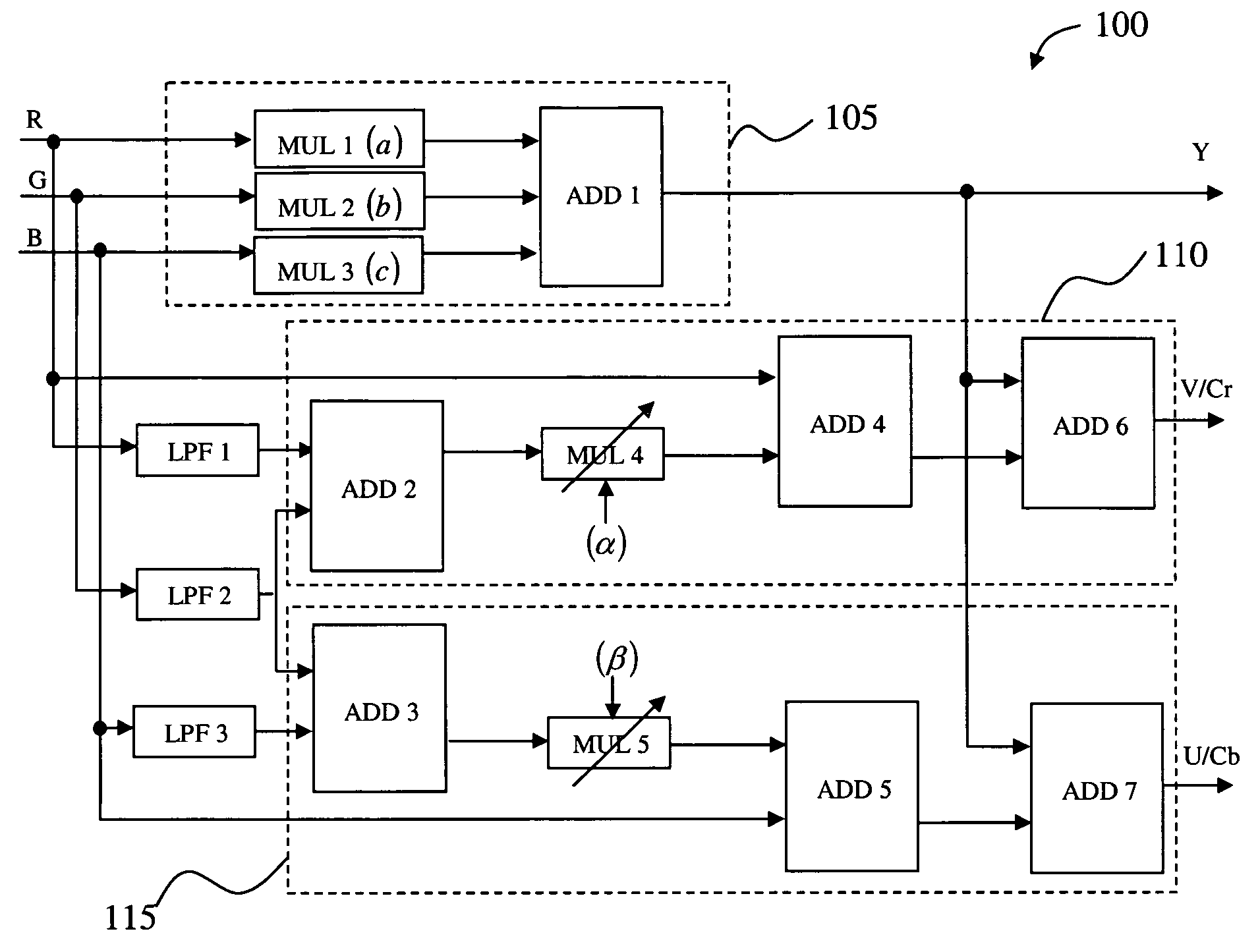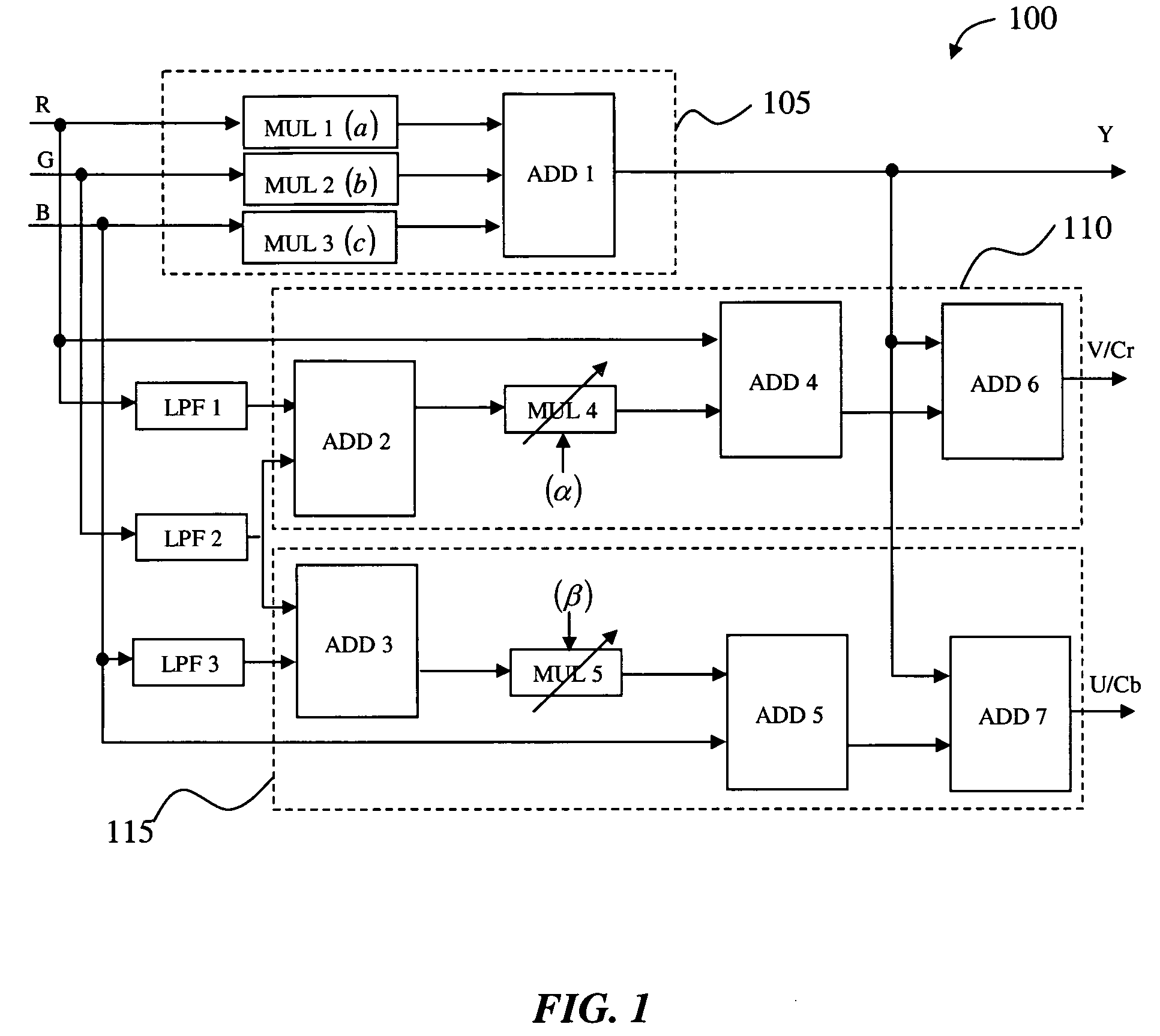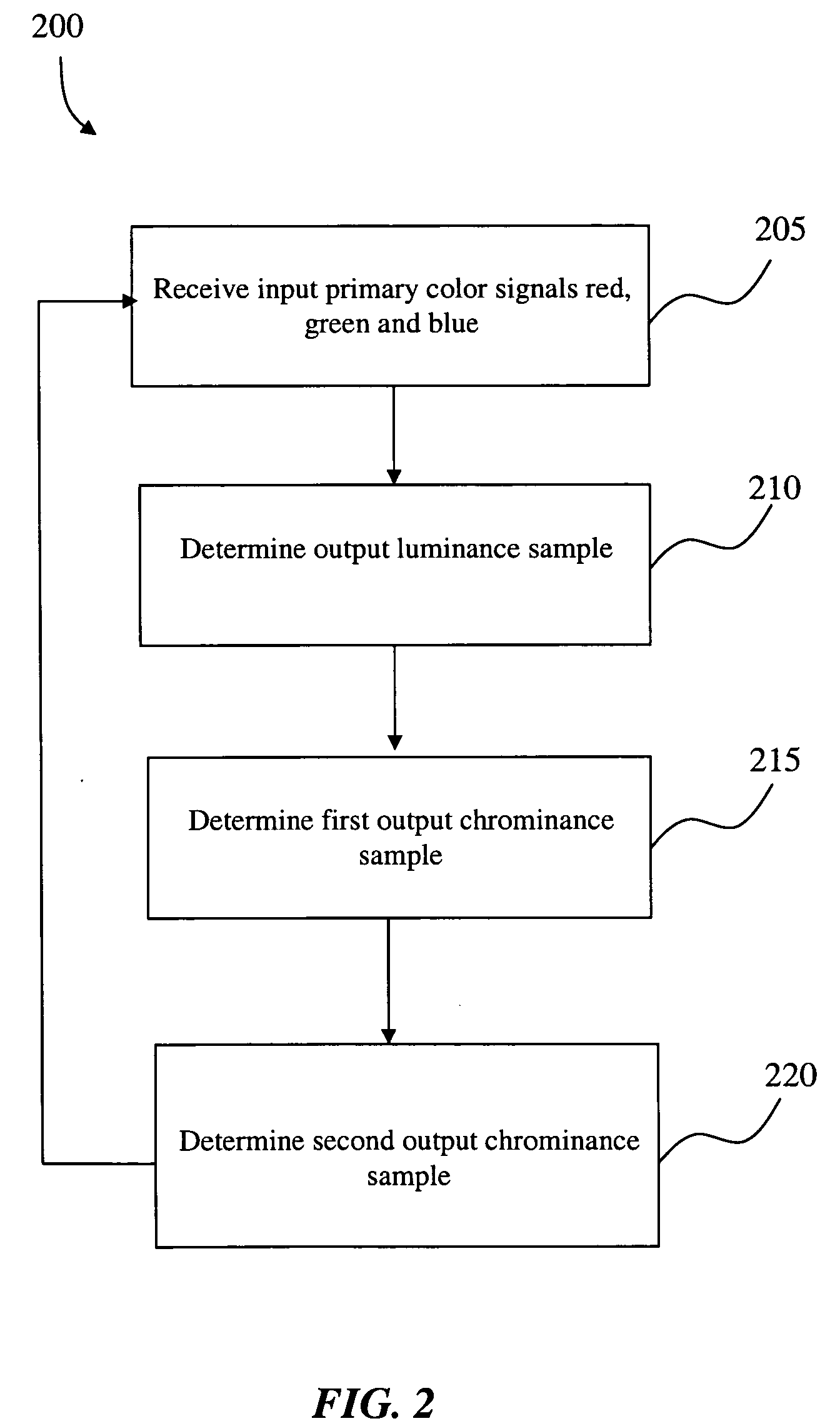Method and system for variable color saturation
a color saturation and variable technology, applied in the field of digital image quality improvement, can solve the problems of human vision, use of matrix also altering the pure luminance level, and amplifying noise levels in output signals, and achieve variable chrominance signals and luminance invariance, low complexity, and direct input signal noise
- Summary
- Abstract
- Description
- Claims
- Application Information
AI Technical Summary
Benefits of technology
Problems solved by technology
Method used
Image
Examples
Embodiment Construction
[0010] In color image sensors it is desirable to divert, if possible, noise from a luminance channel to chrominance channels, because human vision is more sensitive to noise in luminance than in chrominance. It is also possible to reduce noise in chrominance channels, employing low pass spatial filtering (LPF), without affecting the visible sharpness of an image, if the luminance is unaffected by LPF. The present invention enables such transfer and reduction of noise, and thus enables variable saturation levels of color without increasing visible noise, using a low complexity algorithm. The invention can be used in numerous applications and can be implemented very efficiently in hardware as well as in software.
[0011] Prior art methods of color saturation include the disadvantage of not being able to suppress noise while simultaneously preserving luminance. It is mathematically proven that color saturation during conversion to luminance and chrominance produces the best noise suppre...
PUM
 Login to View More
Login to View More Abstract
Description
Claims
Application Information
 Login to View More
Login to View More - R&D
- Intellectual Property
- Life Sciences
- Materials
- Tech Scout
- Unparalleled Data Quality
- Higher Quality Content
- 60% Fewer Hallucinations
Browse by: Latest US Patents, China's latest patents, Technical Efficacy Thesaurus, Application Domain, Technology Topic, Popular Technical Reports.
© 2025 PatSnap. All rights reserved.Legal|Privacy policy|Modern Slavery Act Transparency Statement|Sitemap|About US| Contact US: help@patsnap.com



